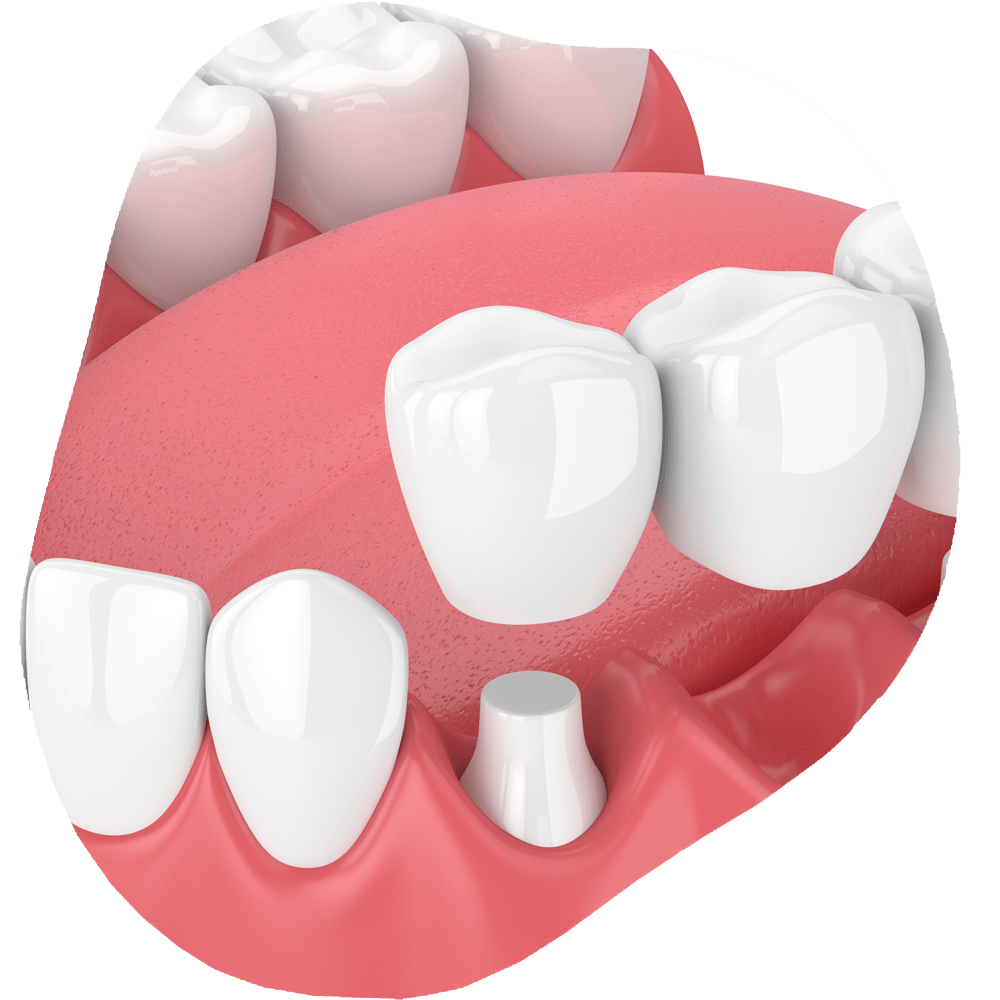A dental bridge is fabricated by reducing the teeth on either side of the missing tooth or teeth by a preparation pattern determined by the location of the teeth and by the material from which the bridge is fabricated. In other words, the abutment teeth are reduced in size to accommodate the material to be used to restore the size and shape of the original teeth in a correct alignment and contact with the opposing teeth.
Once the teeth are prepared, an impression is taken and sent off to a lab for processing. The new dental bridge is usually sent back to the office within 1-2 weeks. To ensure protection and esthetics, a temporary bridge is made in-office while the final bridge is being processed. Once returned, the temporary bridge is removed and the final bridge is permanently cemented.
Not only does a bridge restore function and esthetics, but it also prevents the surrounding teeth from drifting out of position and fill spaces that would otherwise leave surrounding teeth susceptible to tooth decay. A dental bridge can be an excellent treatment option in these situations.
The best candidate for a dental bridge is a person with one or more missing teeth and good dental hygiene. Special attention to hygiene at home will need to be taken, especially flossing under the bridge. Furthermore, dental visits, including professional cleanings, should be completed every six months. If you would like to further explore Dental Bridges, call Toothville Family Dentistry to arrange a consultation or receive more information.






